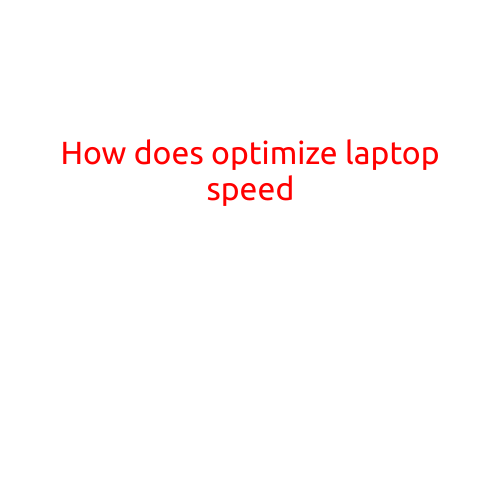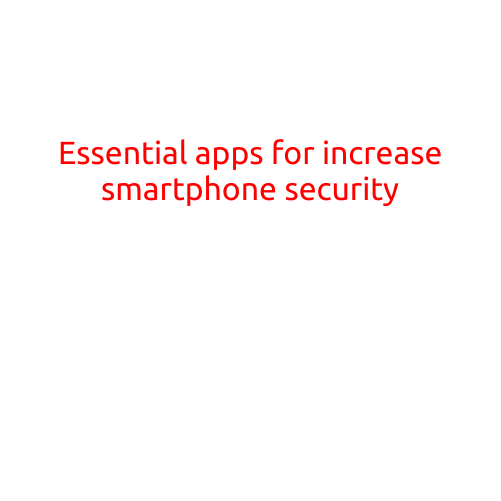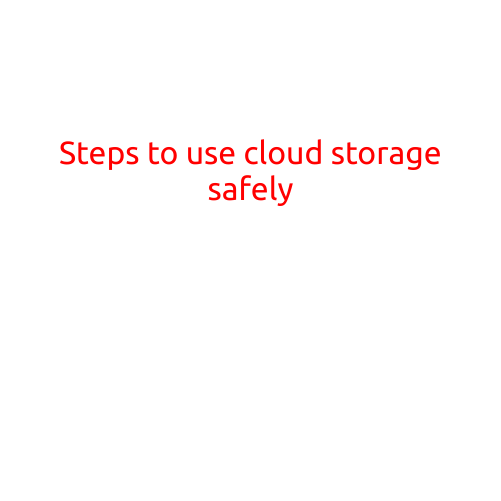
How to Optimize Laptop Speed: Tips and Tricks to Boost Performance
Are you tired of dealing with a slow laptop? Do you often find yourself waiting for programs to load, or for your computer to respond to your queries? Optimizing your laptop speed can make a huge difference in your productivity and overall user experience. In this article, we will provide you with some practical tips and tricks to boost your laptop’s performance.
Tip 1: Close Unnecessary Background Applications
One of the main reasons why your laptop may be slow is due to excessive resource consumption by background applications. Close any unnecessary apps, and make sure that only the essential programs are running in the background. To do this, follow these steps:
- Press the Ctrl + Shift + Esc keys to open the Task Manager
- Click on the “Processes” tab
- Identify and close any unnecessary applications or background processes
Tip 2: Update Your Operating System and Software
Keeping your operating system and software up-to-date is crucial for optimal laptop performance. Updates often include performance enhancements, bug fixes, and security patches that can help improve your laptop’s speed. To update your operating system and software, follow these steps:
- Check for Windows updates by clicking on the Start menu and selecting “Settings”
- Click on “Update & Security” and then click on “Windows Update”
- Follow the prompts to download and install any available updates
- Similarly, update your antivirus software, web browser, and other installed apps
Tip 3: Disable Animations and Effects
Animations and effects can consume system resources and slow down your laptop. Disable them to free up resources and improve performance. To do this, follow these steps:
- Press the Windows key + R to open the Run dialog box
- Type “sysdm.cpl” and press Enter
- Click on the “Advanced” tab and then click on “Settings”
- Under “Performance”, select “Adjust for best performance”
- Click “OK” to save changes
Tip 4: Clear Temporary Files and Folders
Temporary files and folders can take up valuable disk space and slow down your laptop. Clear them out by following these steps:
- Open File Explorer and navigate to the following folder: C:\Windows\Temp
- Delete any files and folders in this folder
- Repeat the process for other temporary folders, such as C:\Users<YourUsername>\AppData\Local\Temp
Tip 5: Upgrade Your RAM
Adding more RAM to your laptop can significantly improve its performance. If your laptop has a RAM slot, consider upgrading it to a higher capacity. To check if your laptop has a RAM slot, follow these steps:
- Restart your laptop and press the ESC key repeatedly to enter the BIOS settings
- Check if there is a RAM slot available
Tip 6: Use a Solid-State Drive (SSD)
A Solid-State Drive (SSD) is a much faster and more efficient storage device than a traditional Hard Disk Drive (HDD). Consider replacing your HDD with an SSD to boost your laptop’s performance. To install an SSD, follow these steps:
- Boot your laptop with the installation media (CD/DVD or USB drive)
- Follow the installation prompts to install the SSD
Tip 7: Run a Disk Cleanup
A disk cleanup can help free up disk space and improve your laptop’s performance. To run a disk cleanup, follow these steps:
- Press the Windows key + R to open the Run dialog box
- Type “cleanmgr” and press Enter
- Follow the prompts to select the drives you want to clean up
- Click “OK” to start the cleanup process
Tip 8: Uninstall Unnecessary Software
Uninstall any unnecessary software to free up disk space and improve your laptop’s performance. To uninstall software, follow these steps:
- Open the Control Panel and click on “Programs and Features”
- Select the software you want to uninstall and click “Uninstall”
By following these tips and tricks, you can significantly improve your laptop’s speed and performance. Remember to regularly update your operating system and software, disable animations and effects, clear temporary files and folders, upgrade your RAM, use a solid-state drive, run a disk cleanup, and uninstall unnecessary software to keep your laptop running smoothly and efficiently.





